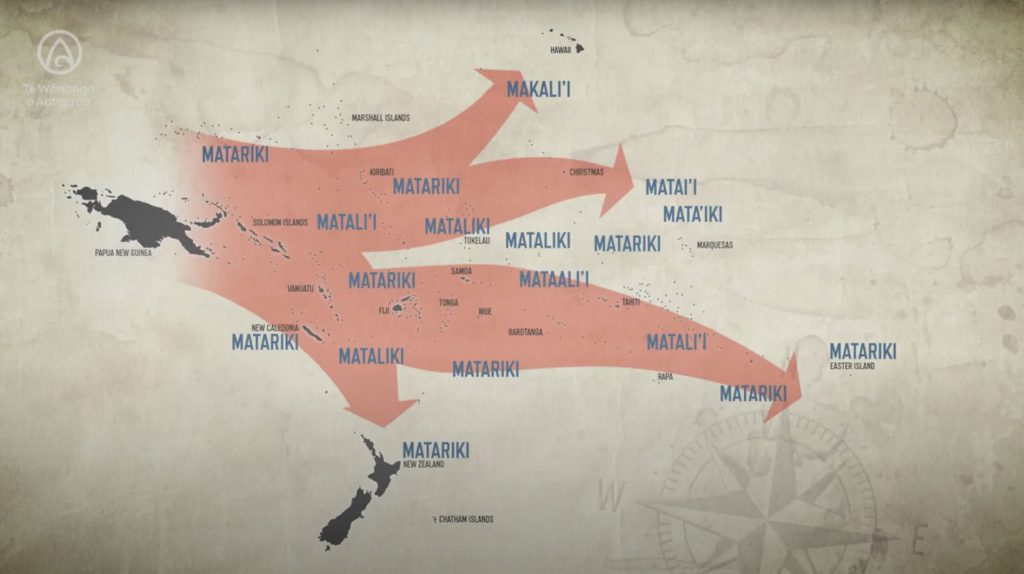Matariki Pasifika
Proudly presented by Te Wānanga o Aotearoa, join Dr Rangi Matamua as he shares his extensive knowledge around Matariki in the Pacific.
Play Video about Matariki Lecture with Rangi Matamua
Proudly presented by Te Wānanga o Aotearoa, join Dr Rangi Matamua as he shares his extensive knowledge around Matariki in the Pacific.
The peoples of Polynesia are undeniably connected, as revealed through similarities in their language, art, customs, and stories. These connections are also reflected in the way that Pleiades is observed among the various peoples of the Pacific.
In Hawai’i, the rising of Makaliʻi (Matariki) in the east falling in sync with the setting of the sun in the west marks the beginning of the Makahiki season and the Hawaiian new year. The season is dedicated to Lono (Rongo) and is one of peace, feasting, and rejuvenation. At its root, Makahiki is a harvest celebration, a universal expression of thanks and appreciation.
In Samoa, Mataalii (“eyes of the chiefs”) has a different origin story. The seven stars are the eyes of the seven chiefs who went to heaven after death, with only one eye of each being visible today. [1]
In Tonga it is known as “Matali’i”, while in Tahiti it is known as “Matari’i.” The year is divided into two seasons: Matari’i above, which begins when the starts first appear on the horizon in the evening, and Matari’i below, when at sunset the stars were invisible [1].
The common name of Matariki is shared throughout much of Te Moana nui a Kiwa (the Pacific), including in Rapa Nui (Easter Island), Pitcairn Island, Kiribati, Rarotonga, and the Solomon Islands.
